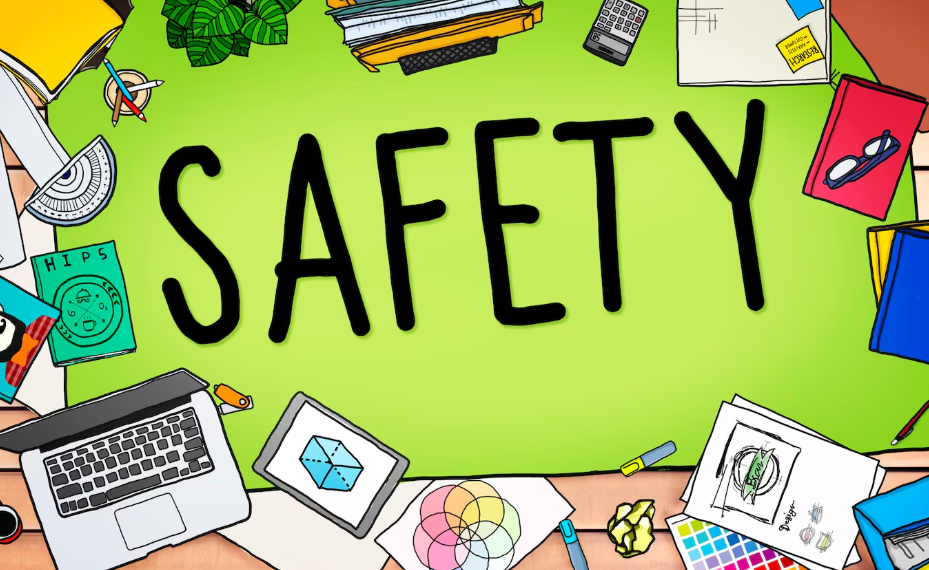“Safety isn’t expensive, it’s priceless.” – Jerry Smith
Let’s face it—when it comes to workplace safety, most organizations talk the talk. Posters, manuals, and checklists are everywhere. But how many truly walk the walk, especially when it comes to blending on-the-job and off-the-job safety training?
Spoiler alert: very few.
If you’re a safety officer, a manager, or just someone who wants to make a difference, this article will change the way you think about safety training—both on the clock and off.
🛠️ What is On-the-Job Safety Training?
Let’s start with the obvious. On-the-job safety training is what happens at the workplace to prepare employees for real-life risks associated with their specific duties.
Whether it’s:
- Teaching a factory worker how to lock out and tag out machinery,
- Training a lab technician on how to handle flammable solvents,
- Or conducting fire evacuation drills in an office…
…this type of training is tailored to job-specific hazards.
Goal: Reduce workplace accidents and ensure regulatory compliance (OSHA, NFPA, ISO standards, etc.)
🔑 Key Elements of On-the-Job Training:
- Hazard Identification & Risk Assessment
- Use of PPE (Personal Protective Equipment)
- Emergency Response Drills
- Safe Equipment Operation
- Job Hazard Analysis (JHA)
- Safety Tool Talks or Toolbox Meetings
And here’s the kicker: this training must be continuous. One-time sessions? Not enough.
🏡 What is Off-the-Job Safety Training?
Now here’s where most companies miss the mark.
Off-the-job safety training teaches employees how to stay safe outside the workplace—while driving, cooking, hiking, using gas cylinders at home, or even during a power outage.
Why does this matter? Because an injured employee—whether at work or not—is a productivity loss to the organization.
🚗 Common Off-the-Job Safety Topics:
- Home Fire Safety
- First Aid and CPR Training
- Electrical Safety at Home
- Road and Driving Safety
- Ergonomics for Remote Workers
- Mental Health and Stress Management
In short, it’s about helping employees lead safer lives even after they punch out.
⚖️ Why a Balanced Approach Matters
Imagine this: You train someone rigorously to avoid slips, trips, and falls at the warehouse. But the same employee goes home, uses a broken ladder to hang Diwali lights, and ends up injured.
You lose manpower. He suffers. Insurance premiums spike. Everyone loses.
By training both on and off the job, you:
- Build a 360-degree safety culture
- Boost employee morale and loyalty
- Reduce absenteeism
- Lower insurance and compensation claims
- Reinforce behavioral safety practices across contexts
📊 Stats Don’t Lie:
According to the National Safety Council:
- More than half of disabling injuries occur off the job.
- 70% of workplace incidents stem from behavioral patterns that originate off-site.
Translation? Off-the-job behaviors influence on-the-job safety outcomes. Period.
🧩 Integrating On-the-Job and Off-the-Job Safety Training
So how do you pull this off without overwhelming your workforce or your training budget?
✅ Step 1: Conduct a Safety Culture Audit
Before designing or revamping your training program, understand:
- Where your risks lie
- What your people know (and don’t)
- Which habits follow them home
Use anonymous surveys, safety audits, interviews, and HR data.
✅ Step 2: Build a Training Calendar
Break it into:
- Quarterly on-the-job safety modules (customized per department)
- Biannual or annual off-the-job safety sessions (open to employees and their families)
Pro Tip: Use national safety days or events like World First Aid Day to anchor off-the-job training.
✅ Step 3: Use Blended Learning Methods
Mix it up:
- Classroom sessions
- Hands-on practice
- eLearning modules
- Mobile app-based safety quizzes
- Scenario-based learning
Gamify it. Make it competitive. Give out certificates and rewards. People remember what they enjoy.
✅ Step 4: Empower Safety Ambassadors
Train and designate employees from different departments to:
- Deliver toolbox talks
- Share safety tips in group chats
- Organize drills and safety weeks
This decentralizes safety culture and keeps it alive every day—not just on audit days.
🧠 Psychology of Safety: Habits are Portable
Here’s a little secret from behavioral science: Safety is a mindset, not a mandate.
When employees internalize safe behavior:
- They check electrical cords at home, just as they would in the lab.
- They avoid texting while driving, the same way they’d avoid distractions while operating a forklift.
- They teach their kids to be cautious—raising the next generation of safety-conscious individuals.
So, your ROI? Invaluable.
📱 Tech Tools That Help
Looking for ways to deliver both types of safety training smartly? Here are some tools you can explore:
🔧 LMS Platforms (Learning Management Systems)
- Moodle
- TalentLMS
- SAP Litmos
These help automate learning paths, track progress, and issue completion certificates.
📲 Mobile Apps for Safety Training
- Skillsoft’s Percipio
- iAuditor by SafetyCulture
- MyOSH
Use them for microlearning or bite-sized daily safety tips.
📹 Video-Based Learning
People retain 95% of a message via video, vs only 10% when reading. Use short animated videos for both training types.
🎯 Real-World Examples of Companies Doing it Right
🌟 Tata Steel India
Conducts both on-site drills and off-the-job safety campaigns involving employees’ families.
🌟 Toyota
Runs “Safe Driving” workshops for employees and even extends it to dealer partners.
🌟 DuPont
Has a legendary safety training program that covers lifestyle safety, not just plant safety.
These companies know that when you care beyond the shift, loyalty and productivity go up.
🧰 Tools for WordPress Blog Formatting
Here’s how you can make this blog look polished and professional on your WordPress site:
✏️ Headings
Use <h2> for main sections and <h3> for subpoints.
📌 Bullet Points & Lists
Use lists (unordered and ordered) to break down complex info.
📷 Media Suggestions
- Add an infographic comparing on-the-job vs off-the-job training
- Embed a YouTube video on home safety tips
- Add stock images: “employee training,” “first aid demo,” “family fire drill”
💬 Callout Block (using Gutenberg or a plugin like Ultimate Addons)
Tip: Make safety personal—ask your team, “What unsafe habit do you want to unlearn?”
🧾 Conclusion: Make Safety a Lifestyle, Not a Lecture
If you’ve read this far, you already understand one thing—safety doesn’t clock out.
It’s not just about ticking boxes for compliance. It’s about making sure your team gets home safely and stays safe when they’re there.
By integrating both on-the-job and off-the-job safety training, you’re not just preventing accidents—you’re building a resilient, aware, and loyal workforce.
So, what are you waiting for?
🔔 Schedule your next safety session—and this time, make sure it covers both worlds.
💬 Tell Us in the Comments:
Have you ever had an incident that could’ve been avoided with off-the-job safety training?
What’s the most memorable safety training you’ve ever attended?
🔁 Readers also enjoyed these blog posts:
- Safety Management’s Role: The Unsung Hero Behind Every Successful Organization
- Safety Management and Its Responsibilities: Protecting People, Preventing Hazards, and Promoting a Culture of Care
- Benchmarking for Safety Performance: A Key to Continuous Improvement
“Start Your Website Journey Today – Exclusive Hostinger Discounts!”

Turn Any Idea into Viral,
Jaw-Dropping AI Videos in Seconds!










